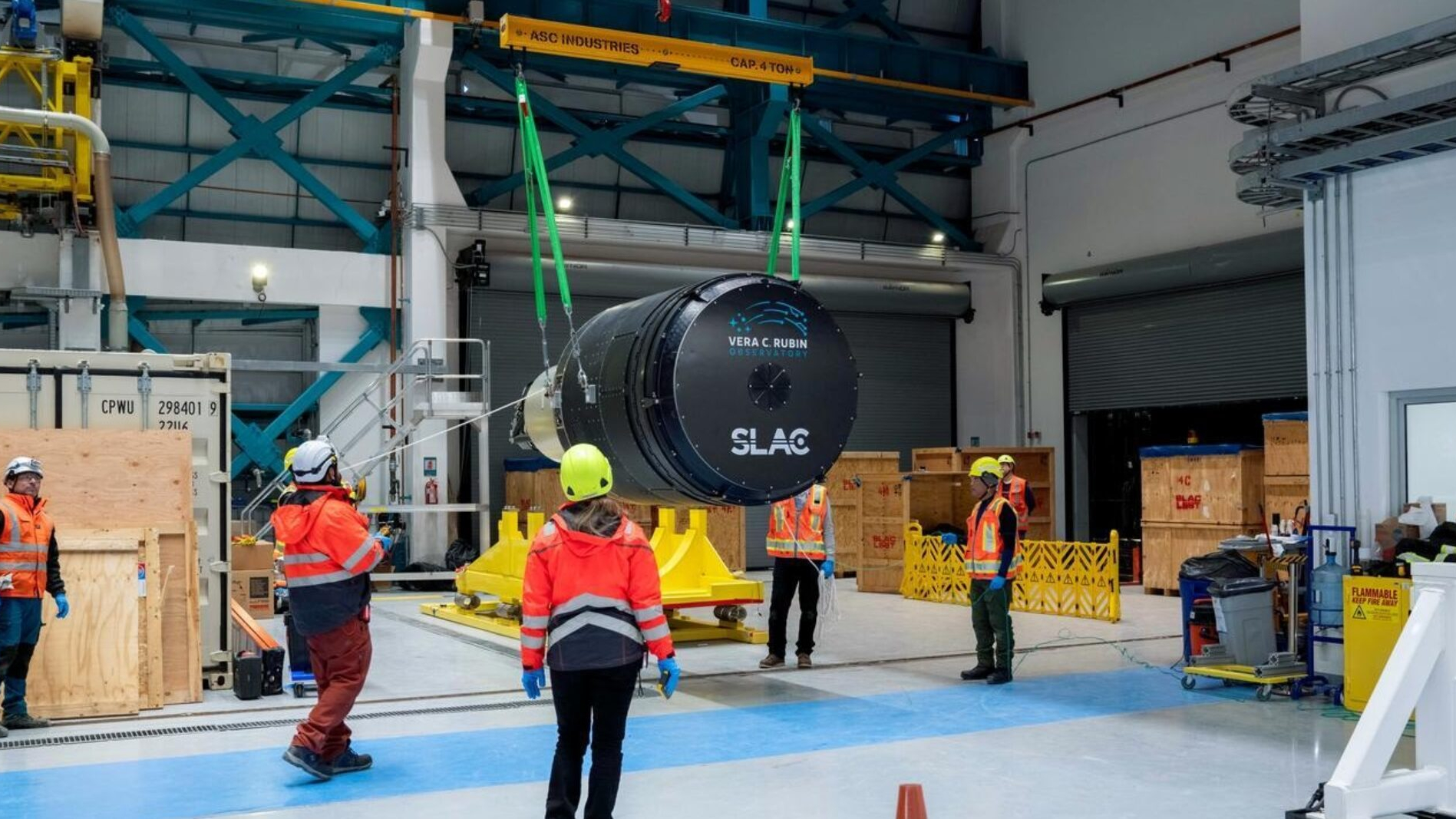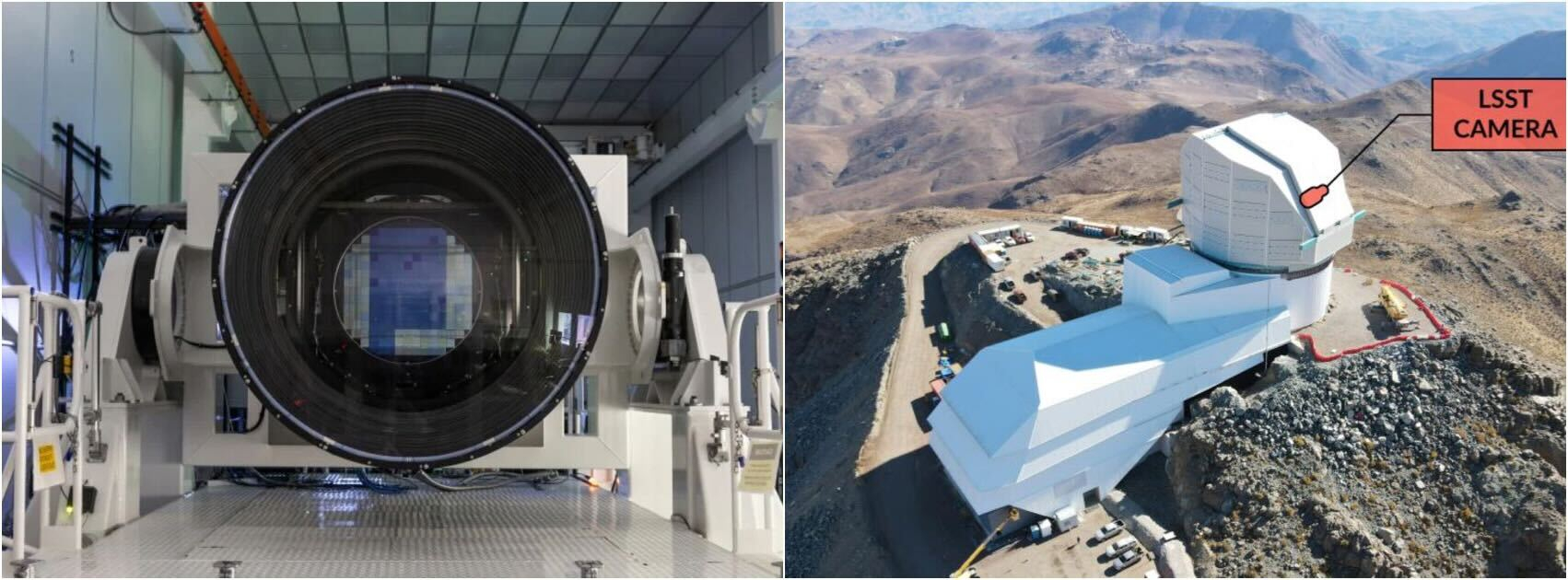How scientists shipped astronomy's largest camera from California to Chile
"Getting the camera to the summit was the last major piece in the puzzle."

After two decades of work, the camera at the heart of the future Vera C. Rubin Observatory arrived at its home last week. It's now perched on the summit of the Cerro Pachón mountain in Chile.
This camera is the final major part of the Rubin Observatory's Simonyi Survey Telescope, upon which it will be installed after several months of rigorous testing.
Successfully and safely transporting the SUV-sized camera from the SLAC National Accelerator Laboratory in California, where it was built over the past 20 years, to the observatory's location at the summit of a mountain in Chilean Andes is no small feat.
Related: The world's largest digital camera is ready to investigate the dark universe
The camera weighs 6,600 pounds (3 metric tons) and spans over five feet (1.5 meters) across — it's the largest camera ever built for astronomy. So, to minimize risk to the $168-million eyepiece, scientists and engineers did a "full dress rehearsal" in 2021 by shipping an analog of the camera's mass to Chile. The simulator was fitted with data loggers to document the conditions the real thing would experience throughout the journey.
"Transporting such a delicate piece of equipment across the world involves a lot of risk. With ten long years of assembly work on the camera, culminating in a ten hour flight and a winding dirt road up a mountain, it was important to get it right," Margaux Lopez, a mechanical engineer at SLAC who led the planning for the camera shipment, said in a statement. "But because we had the experience and the data from the test shipment, we were extremely confident that we could keep the camera safe."
On May 14, the camera was shipped to San Francisco airport for a 10-hour flight to Chile. It flew in a Boeing 747 cargo plane, which landed the next day at the Santiago International Airport in Chile, the closest airport to the Rubin observatory that could accommodate a plane this large.
Breaking space news, the latest updates on rocket launches, skywatching events and more!
By the next evening, the camera and its convoy of nine trucks were safely inside the guarded gate at the base of Cerro Pachón. The next morning, it journeyed for five hours up a winding dirt road, covering 21.7 miles (35 kilometers) to the summit of the mountain, which sits more than 8,900 feet (2,713 meters) above sea level.
"Our goal was to make sure the camera not only survived, but arrived in perfect condition," Kevin Reil, a scientist for the Rubin Observatory, said in a statement. Post-arrival inspections verified the camera did not encounter any unexpected stresses during its long ride.
"Initial indications — including the data collected by the data loggers, accelerometers, and shock sensors — suggest we were successful," said Reil.
The camera's successful arrival at the observatory no doubt comes as a relief not just for all the scientists and engineers working on the camera, but also for a generation of astronomers eagerly awaiting the observatory's first light, currently set for late next year.
That's when the Rubin observatory — formerly known as the Large Synoptic Survey Telescope — will conduct a landmark decade-long study of the universe by generating a panorama of the southern sky every few nights, which will catalog about 37 billion objects. This survey is called the Legacy Survey of Space and Time for which the camera is named.
"Getting the camera to the summit was the last major piece in the puzzle," said Victor Krabbendam, the LSST project manager. "With all Rubin's components physically on site, we're on the home stretch towards transformative science with the LSST."
The LSST camera set a world record in 2020 when it snapped the largest single shot by a giant digital camera. Scientists say just one of its 3,200-megapixel images would demand 378 4K ultra-high-definition TVs. The resolution is so good, a golf ball could be seen from 15 miles (25 kilometers) away in this camera's portraits.
Using data from the 10-year survey, astronomers hope to gather clues about the nature of dark matter and dark energy, which together constitute over 90 percent of our universe's mass but are yet to be directly detected. Most notably, the LSST camera will search and study signs of weak gravitational lensing, a cosmic phenomenon that occurs when a massive galaxy bends or distorts light from background galaxies. By studying these lensed structures, astronomers can map how dark matter is distributed within and around the lensing galaxy.
"We expect the observatory to make many discoveries — things we did not even know existed before," Vera C. Rubin director Steven Kahn, an astrophysicist at Stanford University in California, previously told Space.com.

Sharmila Kuthunur is an independent space journalist based in Bengaluru, India. Her work has also appeared in Scientific American, Science, Astronomy and Live Science, among other publications. She holds a master's degree in journalism from Northeastern University in Boston.


